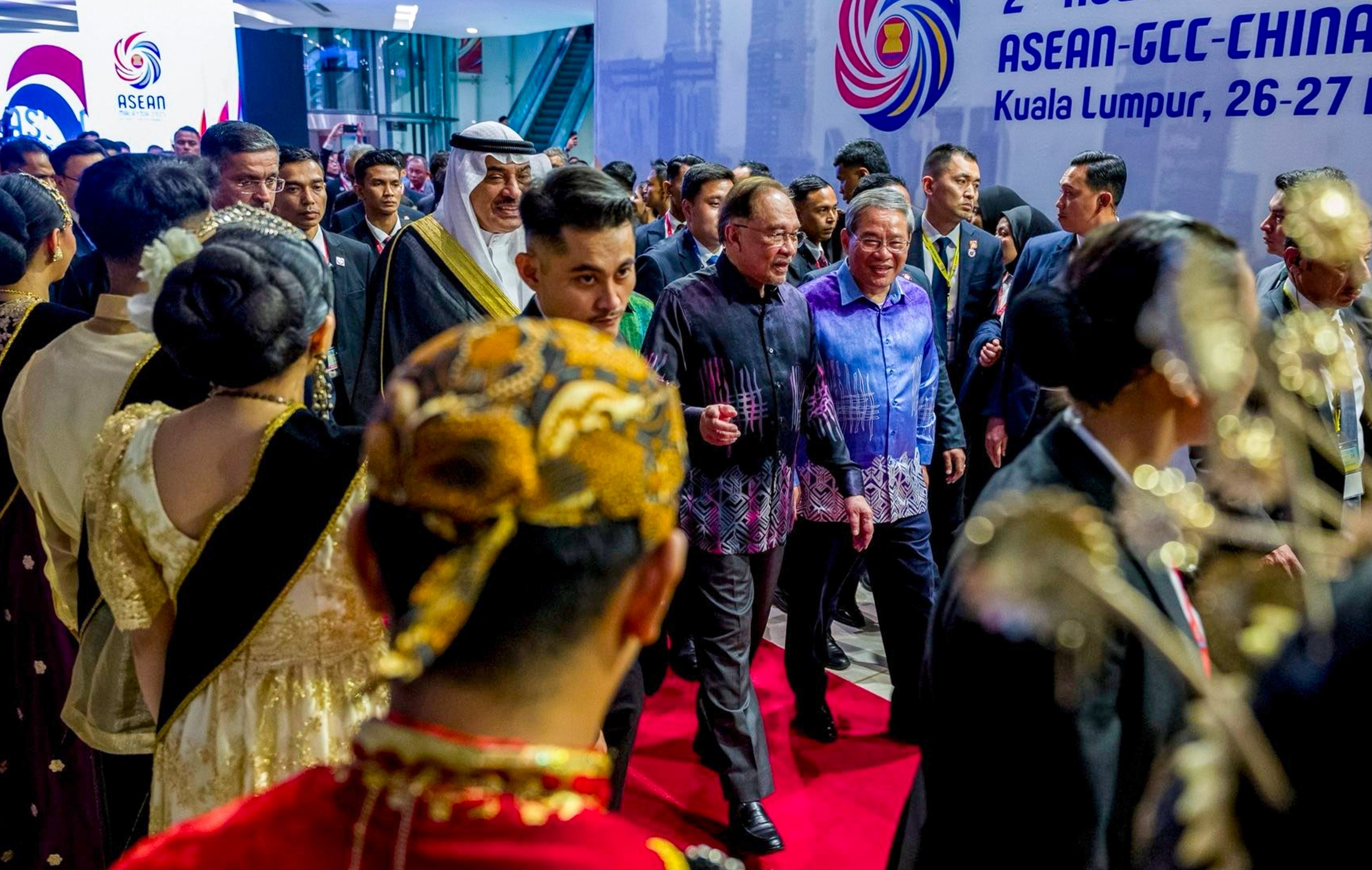Beyond trade, Asean-GCC-China summit heralds Asia’s cultural renaissance
The recent meeting in Kuala Lumpur transcended economics and geopolitics, representing a pivotal moment of inter-civilisational engagement

The inaugural summit between the Association of Southeast Asian Nations (Asean), the Gulf Cooperation Council (GCC) and China, recently held in the Malaysian capital of Kuala Lumpur, went beyond underscoring Asia’s growing geoeconomic prominence – it also served to position the continent as a catalyst for a cultural renaissance.
Prime Minister Anwar Ibrahim of Malaysia, the current Asean chair, has long maintained the principle of neutrality as essential to maintaining the bloc’s centrality. One key approach to securing the region’s stability and prosperity, he has said, is through expanding and diversifying Asean’s partnerships. In line with this vision, Malaysia hosted the Asean-GCC-China Summit alongside the 46th Asean Summit.
To be sure, Asean has robust relationships with both the Gulf states and China. In 2023, the first GCC-Asean Summit was held in the Saudi capital of Riyadh, where both sides agreed to strengthen their ties through economic collaboration in the digital economy, renewable energy and food security.
Like Asean, the Gulf states are actively diversifying their partnerships, pursuing stronger engagement with the European Union, African Union, India and China. In 2022, the inaugural GCC-China Summit also took place in Riyadh, emphasising shared goals in economic diversification, technology and global governance.
Meanwhile, the China-Asean economic integration continues to deepen. Both sides recently wrapped up negotiations to upgrade their 15-year-old free-trade agreement, marking another milestone in their growing partnership.
The Asean-GCC-China Summit seeks to elevate these robust bilateral economic relationships within a multilateral framework. In bringing together three of the world’s most dynamic economic areas, the summit promises to unlock new synergies and drive continent-wide growth.
The summit’s agenda prioritised areas such as sustainable development, food security and digital economy. This includes advancing joint artificial intelligence (AI) initiatives – a strategic effort to deepen integration, boost interconnectivity and fast track the evolution into hi-tech, future-ready economies.
The summit took place amid heightened US-China rivalry. Earlier in May, US President Donald Trump unveiled an agreement to develop AI infrastructure and data centres in the United Arab Emirates. This has however drawn criticism in Washington, with some warning it could expose sensitive US technologies to Chinese access.
In mid-May, Malaysia found itself under pressure after an announcement of an AI initiative was linked to Huawei Technologies’ equipment, as US scrutiny of Chinese semiconductors intensifies. Washington has a global ban on Huawei’s Ascend AI chips, citing violations of US export controls.
America’s determination to contain China is forcing countries towards an uncomfortable decision long avoided: choosing a side.
Geopolitical pressure intensified recently when Trump escalated his global trade war, slapping a 50 per cent tariff on European Union imports – then delaying it – further destabilising an already precarious world economic order.
As both US allies and adversaries recalibrate their positions, the world is witnessing a profound geopolitical reconfiguration. Trump’s disruptive “America first” agenda has accelerated efforts to develop alternative economic frameworks, with nations seeking to insulate themselves from Washington’s unpredictable policies.
In the Global South, platforms like Brics and the Shanghai Cooperation Organisation are laying the groundwork for a more equitable and just world order. In this context, the Asean-GCC-China partnership takes on even greater significance – as a crucial step in advancing the developing world’s vision.
Indeed, the summit brought together a pan-Asian network spanning maritime Asia, from the East China Sea to the Indian Ocean and Arabian Sea.
In his summit opening remarks, Anwar referred to the rich trading histories shared by the three parties, from the Silk Road to the Malacca sultanate’s flourishing as a critical entrepot – a legacy of “vital crossroads linking East and West” that show “the power of openness, exchange and strategic connectivity”.
“Today, Asean carries forward that legacy on a broader scale, emerging as a dynamic crossroads of global commerce, innovation and opportunity,” said Anwar. And Malaysia, as summit host, has reprised its historic role – once again serving as an economic corridor linking East and West Asia.
This is arguably the first time since the Ming dynasty and admiral Zheng He’s legendary voyages in the 15th century that Asia has witnessed such profound economic interconnectedness.
Herein lies the Asean-GCC-China summit’s historic significance: it symbolises Asia’s resurgence as a global economic powerhouse. After centuries of Western colonial dominance, the Asia-Pacific is reclaiming its economic dynamism and driving a pivotal shift in the world’s economic centre – from the Global North to the Global South. Many see this as the dawn of the “Asian century”.
There is yet another layer of historical significance. In the 15th century, the Malacca sultanate thrived as a cosmopolitan crossroads where Asia’s diverse faiths and traditions converged and blended. In his 1996 book The Asian Renaissance, Anwar envisioned a revitalised Asia where its great civilisations flourished anew.
That vision gained renewed momentum in 2023, when Anwar and Chinese President Xi Jinping agreed to collaborate in their civilisational endeavours, citing Xi’s Global Civilisation Initiative and committing to strengthen intercultural and interreligious trust.
In truth, the gathering of Asean, Gulf and Chinese leaders in Kuala Lumpur transcended geopolitics – it represented a pivotal moment of inter-civilisational engagement, bridging the Islamic, Confucian and pluralistic traditions of Southeast Asia. Amid escalating xenophobia and ethno-nationalism, the Asean-GCC-China partnership stands as a powerful counterpoint: proof that civilisations can unite in pursuit of shared progress.
It was a landmark summit, one that heralds a historic moment. Yes, it underscored Asia’s growing geoeconomic influence in reconfiguring the global economic order. But more than that, it positions the continent for a cultural renaissance – one where civilisations flourish through coexistence.